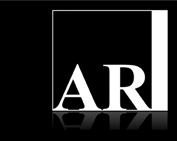SPOMINSKI KOMPLEKS KAMPOR NA OTOKU RAB
KAMPOR MEMORIAL COMPLEX
Author(s): Tomaž KrušecSubject(s): Cultural Essay, Political Essay, Societal Essay
Published by: Fakulteta za arhitekturo, Univerza v Ljubljani
Keywords: Kampor Memorial Complex on the Island of Rab; Le Corbusier; concentration camp
Summary/Abstract: The Kampor Memorial Complex, which was built in 1953 to a design by architect Edvard Ravnikar, is situated on the site of a former cemetery, where between 1942 and 1943 the Italians buried the prisoners who died in the concentration camp on the Island of Rab. Along with the description of the architectural design of the Kampor Memorial Complex on the Island of Rab, the purpose of the paper is to show the most significant models and motivations influencing this particular architectural creation by Ravnikar. The analysis of spatial sequences of the memorial complex served as a basis to study the architectural concept of the cemetery, as described in the paper. The layout of the cemetery is longitudinal. The transversal terraces formulating the lines of graves are longitudinally cut in the middle by a paved path representing the central communication axis of the memorial complex. The path is additionally defined by a sequence of three stone obelisks of different heights, situated along the path. Along the path, three major programmatic emphases can be identified: the entrance vestibule, the platform with the great obelisk and a water tank, and the area below the vaulted structure in stone, also called the Museum. The paper describes the models and influences underlying the creation of Ravnikar's architectural design of the Kampor Memorial Complex on the Island of Rab, particularly Le Corbusier's influence on Ravnikar in the 1940's and the 1950's. In many ways, Ravnikar's stay in Paris and work with Le Corbusier in 1938 round off his basic architectural education; nevertheless, he remained rooted in the classical architectural elements that he obtained in his studies, particularly in the seminar by Jože Plečnik.
Journal: AR Arhitektura, raziskave
- Issue Year: 2013
- Issue No: 2
- Page Range: 19-30
- Page Count: 12
- Language: Slovenian

